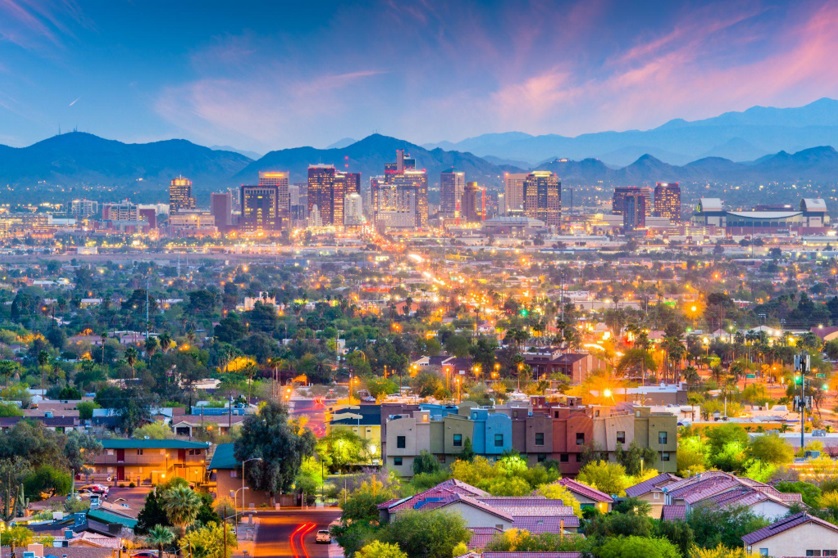Why Phoenix Remains a Hot Spot for Homebuyers Despite Rising Costs

Phoenix has been one of the fastest-growing metro areas in the United States for years. People from across the country — especially from pricier coastal states — have flocked to Arizona’s capital for its sunshine, jobs, and relatively affordable housing.
But by 2025, things look different. Prices are higher, mortgage rates remain elevated, and affordability is a growing concern for local families. Despite these challenges, Phoenix continues to attract homebuyers at a pace few other cities can match. What explains its enduring appeal?
Job Growth Keeps Fueling Demand
The booming job market is one of the strongest magnets drawing people to Phoenix. The region has diversified far beyond its historical reliance on construction and tourism. Today, Phoenix is a tech, healthcare, finance, and logistics hub.
Major employers like Intel, Amazon, and Banner Health continue to expand in the area, creating a steady stream of high-paying jobs. Arizona State University’s growing research ecosystem feeds into tech and biotech startups, helping keep the local economy dynamic.
For professionals in these fields, Phoenix offers career opportunities at a lower cost of living than hubs like San Francisco or Seattle. Even with rising home prices, the relative affordability and job security is enough to keep demand strong.
Infrastructure and Transportation Improvements
Part of Phoenix’s appeal lies not just in its homes but also in the city’s investment in infrastructure. Light rail extensions, freeway expansions, and airport improvements make the region increasingly connected and convenient.
For commuters, expanded highway capacity helps reduce travel time between suburbs and job centers. For urban residents, light rail continues to open up new neighborhoods to car-free or car-light living. And Phoenix Sky Harbor International Airport remains one of the busiest hubs in the country, offering nonstop flights to nearly every major U.S. city — an attractive feature for professionals who travel frequently.
These infrastructure projects enhance the long-term livability and value of owning a home in Phoenix, ensuring that new residents see both immediate and future benefits.
A Lifestyle Buyers Can’t Resist
Numbers aside, lifestyle is one of Phoenix’s biggest selling points. More than 300 days of sunshine a year, world-class golf courses, nearby hiking trails, and a thriving restaurant and arts scene make it a destination for people who want opportunity and quality of life.
Young professionals are attracted to the energy of downtown and Tempe, while families appreciate suburban communities with good schools and spacious homes. Retirees, meanwhile, find Arizona’s warm climate and vibrant 55+ communities ideal for their golden years.
For many buyers, the chance to combine career, lifestyle, and climate into one package makes Phoenix worth the cost.
Long-Term Investment Potential
Even as buyers grumble about higher prices, Phoenix remains attractive from an investment standpoint. The Valley’s population growth has been consistent for decades, and demographers project it will continue well into the future.
This long-term growth translates into steady housing demand. Unlike markets with boom-and-bust cycles tied to a single industry, Phoenix’s diversified economy and migration inflows make it a relatively safe bet.
For investors and individual buyers alike, purchasing a home in Phoenix is not just about today’s living situation but also about long-term value.
Migration Keeps the Market Moving
Much of Phoenix’s demand comes from outside Arizona. California residents continue to top the list of newcomers, drawn by lower taxes and more affordable homes. Even as Phoenix prices climb, they pale compared to Los Angeles, San Diego, or San Jose.
A Californian selling a $1.2 million home can often buy a similar property in Arizona for half the price, while still pocketing equity. This migration pipeline ensures that even when local buyers feel squeezed, out-of-state demand keeps the market moving.
Other states contribute too — Midwesterners seeking warmer weather, remote workers looking for affordability, and retirees aiming to stretch their retirement savings.
Rising Costs: The Flip Side of Growth
Of course, Phoenix’s popularity comes at a price. Median home values now exceed $450,000, up significantly from just five years ago. Mortgage rates hovering above 6% make monthly payments steep, especially for first-time buyers relying on local incomes.
Renters aren’t immune either. Rising rents reflect the same supply-and-demand imbalance, leaving many households struggling to save for a down payment.
This affordability crunch has sparked debates about zoning, new construction, and how the region can balance growth with livability. It’s one of the defining challenges Phoenix faces in 2025 and beyond.
Sellers Still Hold an Edge
Despite the affordability headwinds, Phoenix remains a seller-friendly market overall. Homes may sit longer than they did during the peak frenzy of 2020–2022, but demand is still high, especially for well-priced properties in desirable neighborhoods.
Sellers, however, must be more strategic. Overpricing a home to attract a bidding war is less likely to succeed today. Buyers are choosier, and inventory is creeping up. Sellers who want to stand out focus on curb appeal, competitive pricing, and savvy marketing.
Another factor: costs. Traditional commission structures can eat into a seller’s proceeds, especially with today’s high home values. That’s why many Phoenix homeowners are exploring alternatives like AZ Flat Fee, which allows them to pay a flat rate instead of a percentage-based commission. In a market where every dollar of equity matters, this model helps sellers stay competitive while keeping more of their profits.
The Bottom Line: Phoenix Isn’t Cooling Anytime Soon
Yes, prices are higher. Yes, mortgage rates make monthly payments painful. And yes, affordability is a serious issue for many local families. Yet none of these challenges has stopped Phoenix from remaining one of the country’s most desirable places to live.
The region’s strong job market, enviable lifestyle, steady migration inflows, and long-term growth potential keep buyers coming. For sellers, that means opportunity still exists — as long as they adapt to the realities of today’s market.
Phoenix in 2025 isn’t the bargain it once was, but it’s still a hot spot for homebuyers who see the value of investing in a city that continues to grow, evolve, and thrive.


















